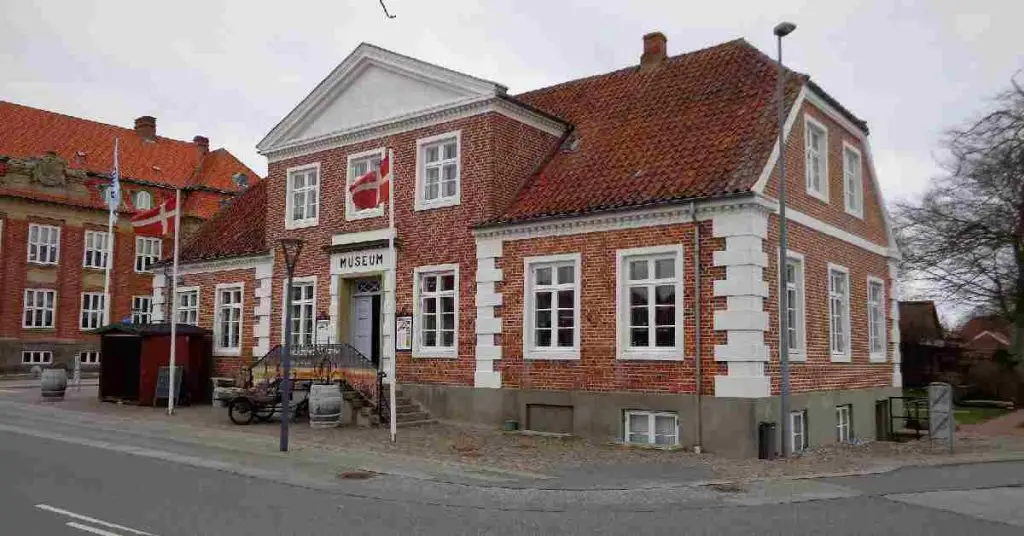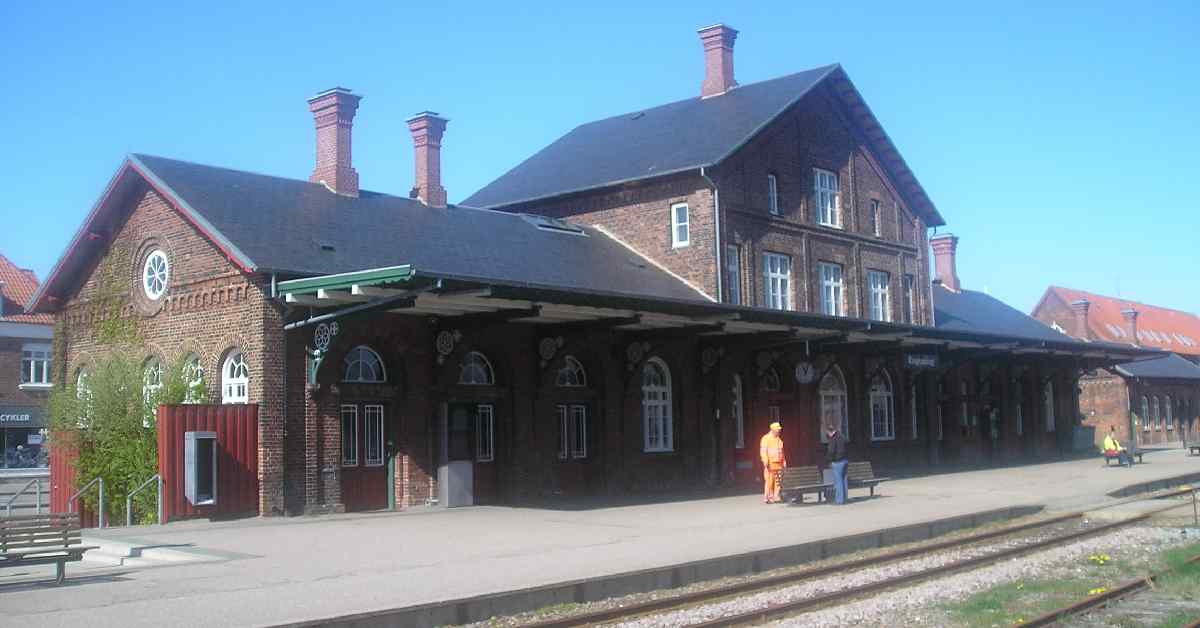Ringkobing is a town on the west coast of Denmark. I could feel its old-world charm with its cobblestone streets, colorful buildings, and rich history. Walking through Ringkøbing’s narrow alleyways, I witnessed architectural relics and well-preserved buildings dating back to the 18th and 19th centuries. This included merchant houses that narrate tales of a thriving maritime economy.
This town, with a population of approximately 9,800 inhabitants, serves as the administrative center of the Ringkøbing-Skjern Municipality. And it is situated near the scenic Ringkøbing Fjord, which covers about 300 square kilometers. So it’s on the list of towns surrounded by fjords like Roskilde. Renowned for its well-preserved medieval architecture and vibrant cultural life, Ringkøbing offers a unique glimpse into both Denmark’s past and its contemporary rural life.
Exploring the Charming Coastal Town of Ringkobing
The importance of Ringkøbing lies not only in its historical significance but also in its role as a symbol of Danish coastal living. Founded in the early 13th century, the town’s name translates to “The Market Town by the Ring Peninsula.” Thus, reflecting its origins as a key trading hub due to its strategic location by the fjord. Despite its small size, the town played a significant role in the region’s history as a bustling center of trade and commerce.
The Ringkøbing Fjord, one of the largest fjords in Denmark, provides a stunning backdrop for the town. And it offers numerous opportunities for outdoor activities such as sailing, kayaking, and birdwatching. The fjord’s unique ecosystem attracts diverse bird species, making it a paradise for ornithologists and nature enthusiasts. Moreover, the vast beaches along the North Sea, just a few kilometers from the town, are perfect for long walks, sunbathing, and windsurfing. Therefore, contributing to the town’s popularity as a holiday destination.
Furthermore, Ringkøbing hosts various events and festivals throughout the year that celebrate local traditions and global influences. The town square, known as Torvet, is a lively centerpiece hosting markets, concerts, and gatherings, reflecting the lively community spirit. Among the town’s notable events is ‘The Sand Sculpture Festival,’ held annually in the nearby town of Søndervig, where local and international artists create magnificent sand artworks.
When and How to Visit Ringkobing: A Traveler’s Guide

Best Times to Visit
The most popular time to visit is during the late spring and summer months, from May to September. This is when the weather is generally mild and pleasant, ranging from an average of 15 to 20 degrees Celsius. These months are ideal for enjoying outdoor activities such as exploring the nearby beaches or taking a leisurely boat trip on the Ringkøbing Fjord. During this period, the town also hosts several festivals and local events. Hence, offering a vibrant atmosphere filled with music, art, and Danish culinary delights.
Autumn (September to November) presents a different, equally inviting scene, with tranquil landscapes as the foliage turns hues of gold and red. It’s also hunting season for local game, a tradition deeply rooted in Danish culture. And it’s a fascinating time to explore the culinary offerings of the region.
While winters can be colder, with temperatures dropping to around 0 degrees Celsius, the town’s cozy cafes and historic architecture provide a warm retreat. Christmas markets and seasonal decorations bring a festive spirit, making winter visits a charming and peaceful experience.
Getting to Ringkobing
Ringkøbing is easily accessible despite its remote setting. From Denmark’s capital, Copenhagen, visitors can travel approximately 300 kilometers to Ringkøbing by car. It is a journey that typically takes around three and a half hours. Alternatively, the Danish railway system offers a scenic route from Copenhagen to Ringkøbing, a journey lasting about four and a half hours.
For those arriving internationally, Billund Airport, located about 70 kilometers away, provides a closer point of entry. From Billund, renting a car or utilizing regional buses are practical options for reaching Ringkøbing.
Tips for a Memorable Visit
To make the most of your visit to Ringkøbing, consider the following tips:
1. Explore Beyond the Town Center: While the town center offers rich historical and cultural experiences, the natural beauty surrounding the area is not to be missed. Rent a bicycle or take a hike in the nearby nature reserves to experience Denmark’s pristine landscapes and wildlife.
2. Embrace Local Cuisine: Dine at local restaurants and cafes to savor authentic Danish dishes. For example, smørrebrød (open-faced sandwiches) and freshly caught fish from the fjord. Engaging with local flavors provides a deeper appreciation of the culture.
3. Engage with the Community: Participate in local events and festivals to connect with the town’s welcoming residents and learn about time-honored traditions. Whether you are attending a summer concert on Torvet or watching sand sculptures being crafted, these experiences offer unique insights.
Conclusion
Surrounded by the serene Ringkøbing Fjord and breathtaking North Sea coastline, Ringkøbing offers a blend of historical intrigue, vibrant cultural celebrations, and stunning natural landscapes. Whether you are exploring its medieval architecture, partaking in local festivals, or enjoying outdoor activities in its scenic surroundings, Ringkøbing guarantees an enriching travel experience.
Frequently Asked Questions about Ringkobing
1. What is the best time to visit Ringkøbing?
The best time to visit Ringkøbing is during the late spring and summer months, from May to September, when the weather is warm and many outdoor activities and festivals are held.
2. How can I reach Ringkøbing from Copenhagen?
You can reach Ringkøbing from Copenhagen by car, a journey of approximately three and a half hours, or by train, which takes about four and a half hours.
3. Are there any significant cultural events in Ringkøbing?
Yes, Ringkøbing hosts various events throughout the year, such as markets, concerts, and the Sand Sculpture Festival in nearby Søndervig.
4. What outdoor activities can I enjoy in Ringkøbing?
Visitors can partake in sailing, kayaking, birdwatching, cycling, and hiking in and around the area, enjoying the natural beauty of the fjord and coastline.
5. Is Ringkøbing suitable for family visits?
Absolutely! Ringkøbing offers family-friendly activities, especially in the summer, with kid-friendly beaches, nature trails, and festivals that cater to all ages.
6. What are some must-try local dishes in Ringkøbing?
Be sure to try smørrebrød, fresh seafood, and local specialties that reflect the region’s culinary traditions.
7. Is Ringkøbing wheelchair accessible?
While many attractions and accommodations strive to be accessible, it’s advisable to check specific locations in advance to ensure they meet your requirements.
8. What should I pack for a visit to Ringkøbing?
Pack comfortable clothing suitable for walking and exploring. Depending on the season, include layers and waterproof gear for the changing weather.
9. How can I practice responsible tourism in Ringkøbing?
Respect the natural environment by staying on designated paths, disposing of waste properly, and supporting local businesses during your visit.




